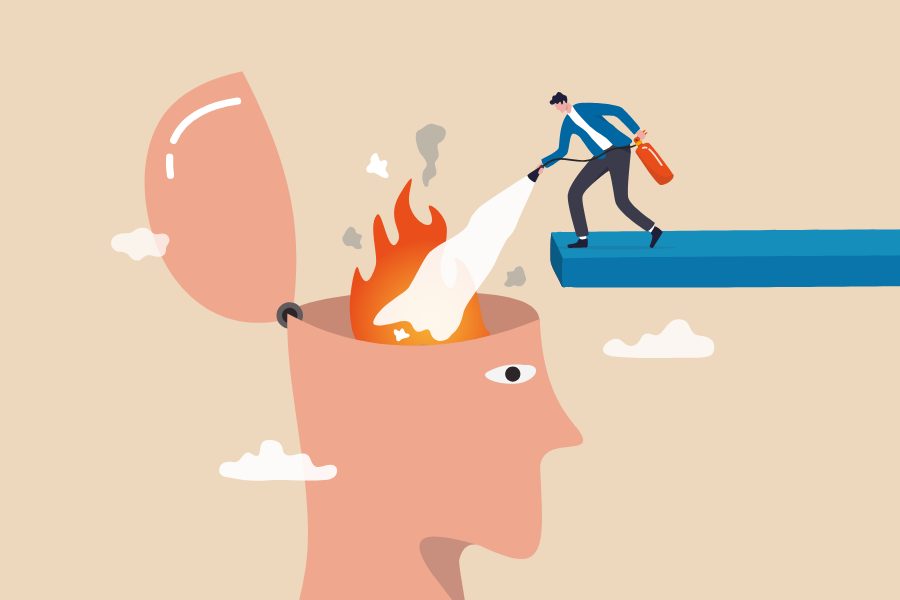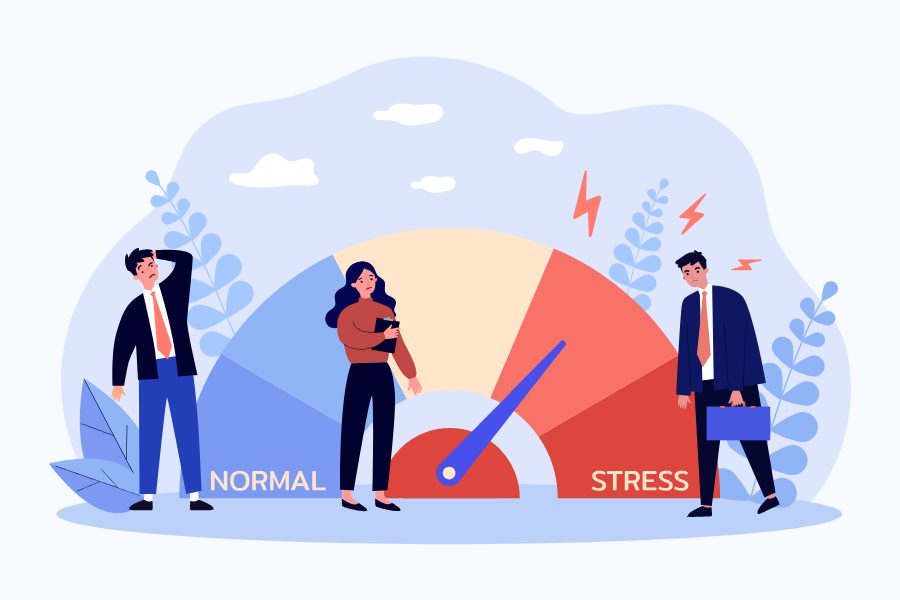According to data from the Mexican Social Security Institute (IMSS), 75% of Mexicans suffer from fatigue due to work-related stress.
Teachers are no exception when it comes to suffering the consequences of this condition, said Dr. Adriana Amezcua, a researcher and professor at Tec de Monterrey.
Work-related stress develops when there is pressure in the work environment that can lead to physical and/or mental strain on individuals, she explained during one of the workshops at the 2023 National Teachers’ Meeting.

“When stress is constant and intense, exceeding someone’s energy and response capacity, it results in job burnout,” said Amezcua, who is also Coordinator of Academic Improvement at the Student Wellbeing Office on Monterrey campus.
The wellbeing expert shares steps for recognizing and responding to work-related stress in order to achieve greater stability and job satisfaction:
1. Starting point: identify your work personality
2. Work-related stress in the teaching profession
3. Test to identify the level of work-related stress
4. Early strategies to tackle work-related stress
1. Starting point: identify your work personality
The wellbeing expert explains that it is important to understand the two types of personalities that are often present in the workplace, according to analysis by researchers Friedman and Rosenman.
“Type A personalities are impatient, competitive, find it hard to relax or take a break, work long hours, get impatient when other people don’t keep up with them, and feel uncomfortable when they fall behind,” she says.
“On the other hand, type Bs are more patient and relaxed, they take their time over activities and find it easy to stop working. They define their work and personal time, set limits, and if they fall behind in an activity, they resume and continue,” she adds.

Therefore, the coordinator says that those with personality type (A) are twice as likely to suffer from emotional and physical burnout in the workplace.
The consequences of chronic stress at work -also known as burnout- include physical health problems, such as cardiovascular disorders, muscle pain, and migraines, due to the constant release of stress hormones that negatively affect the body in the long term.
Stressed workers may also experience emotional repercussions such as anxiety, depression, and irritability, which negatively affect their work performance and their ability to maintain healthy interpersonal relationships.
2. Work-related stress in the teaching profession
Although any profession can be demanding and therefore lead to a high level of burnout, the workshop leader pointed out that teachers are in a particularly vulnerable position.
One of the reasons for this is related to society’s high expectations of their work, as well as requiring them to be fully absorbed, highly demanding, and work hard in the classroom.
“Being a teacher is classified as one of the professions with the greatest psychosocial risks, such as burnout,” the researcher explains, referring to authors such as Peiró.
The expert shared four areas to consider that can affect teachers:
- Emotional burnout: exhaustion of emotional resources
- Depersonalization: indifference, indolence, or cynicism towards the persons served; diminished self-efficacy
- Guilt: someone with a high sense of responsibility believes that they are not doing enough
- Low self-fulfillment: damage to self-concept and decline in professional identity
3. Test to measure the level of work-related stress
Work-related stress can have a negative impact on physical and mental health. Recognizing work-related stress levels allows us to respond in time to reverse these problems.
IMSS has adapted the Psychosomatic Symptoms Questionnaire (or PSQ) to provide a work-related stress test that can be used as a tool to assess stress.
Recognizing if stress is low will allow proactive measures to be taken to prevent it from worsening and becoming a chronic problem.
If stress is at a high level, assistance must be sought urgently to develop a personalized intervention plan and find strategies to manage it more effectively.

At the workshop, Amezcua highlighted that personal strategies as well as collaborative work are necessary in order to tackle stress.
“This is where we need leaders to see how we can better collaborate in the work environment and tackle burnout,” the expert says.
These are the 10 tips provided by the expert to start tackling work-related stress:
1. Avoid feeling bad about feeling vulnerable.
2. Job burnout is related to the work environment, which everyone is responsible for, so it is essential to work together to create a healthy environment so everyone can grow together.
3. Analyze what we can and cannot control.
4. Contribute to improving the work environment to tackle burnout.
5. Build or strengthen our support network and recognize that challenges require assistance.
6. Keep in mind that negative stress is a reminder to avoid isolation and to seek out social support networks.
7. Nurturing our wellbeing is the key to self-conservation.
8. Establish our ideals of why we are educators in order to motivate us to move forward for our students.
9. Talk about what is happening to us and remember that denial hinders resilience because we are not tackling the source of the situation.
10. Don’t forget that “the best we can do is not deny it.”
The expert also pointed out that there are some activities that contribute to the individual development of teachers.
“Most teachers choose to engage in physical activities, find spaces for self-reflection, get regular sleep, seek out psychotherapeutic treatment, and so on, to find balance.
“At the end of the day, wellbeing is about balancing all the important areas of life,” she concluded.
YOU MAY ALSO BE INTERESTED IN:







